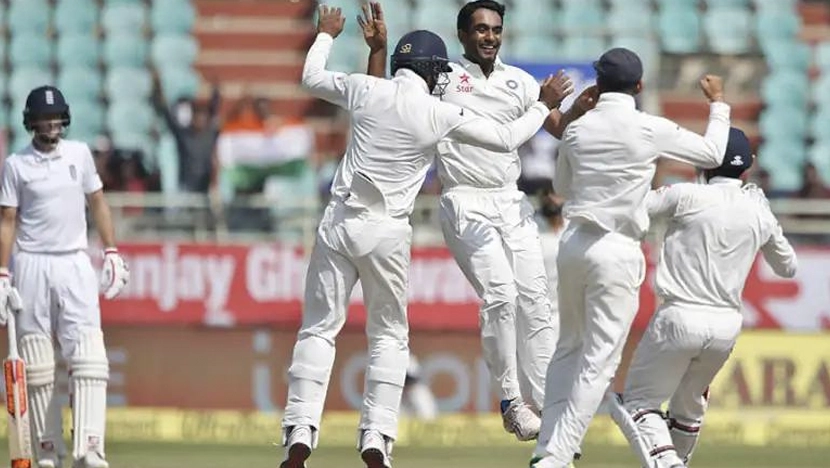A week is a long time in Test cricket, and India proved that with a resounding response in the second Test at Edgbaston. After falling short in the opening Test, the visitors bounced back in style, beating England by a mammoth 336 runs.
This victory not only levelled the five-match series but also reasserted India’s ability to bounce back on foreign soil with authority. From Shubman Gill’s majestic double hundred to Akash Deep’s dream match with the ball, it was a contest largely dictated by Indian control from start to finish.
Here’s a detailed look at the major highlights of the Edgbaston Test:
1. Captain Shubman Gill Leads with Twin Tons
If there were any questions about Shubman Gill’s leadership credentials, this Test should put them to rest. The young skipper led from the front with a sensational 269 in the first innings, his first Test double hundred and the highest individual score by an Indian in England, eclipsing Sunil Gavaskar’s 221 from 1979. But Gill wasn’t done. In the second innings, with India looking to bat England out of the game, he compiled another masterclass – an unbeaten 161.
Gill’s technique was compact, his shot selection assured, and his temperament flawless. What stood out was not just the volume of runs but the way he controlled the game – accelerating when needed, defending when required, and building partnerships throughout. His twin centuries came at a strike rate that never allowed England’s bowlers to settle, and his captaincy decisions were equally precise throughout the match.
2. India’s Mammoth Run Pile – Over 1000 Runs in a Test
Across two innings, India posted 587 and 427/6 declared – a staggering 1,014 runs, making it one of their most dominant batting displays in overseas Tests. The foundation was laid in the first innings through Gill’s 269 and aided by solid contributions from Ravindra Jadeja (89) and Washington Sundar (42). In the second innings, Rishabh Pant chipped in with a brisk 50 while the lower order piled on runs quickly to push the lead past 600.
India’s batting not only ensured a massive total but also kept England in the field for long hours, sapping their energy and morale. The declaration came with a target of 608 — the second-highest fourth innings target in Test history. It was more than a statement. It was a challenge England never came close to answering.
3. Akash Deep’s Breakout Test Performance
With Jasprit Bumrah rested for this game, Akash Deep was handed a big responsibility. And the Bengal pacer delivered beyond expectations. In just his second Test, he bagged 10 wickets in the match (4/88 & 6/99) and played a central role in dismantling the English batting line-up in both innings.
His use of seam movement and subtle variations in pace were top-class. He struck early with the new ball, removed key batters like Duckett and Brook, and cleaned up the tail with ruthless efficiency. His final figures read like a dream, and with this showing, he may have just cemented his place in the XI, even with Bumrah returning for the next Test.
4. Mohammed Siraj Sets the Tone with First Innings Burst
While Akash Deep was the star in the second innings, Mohammed Siraj turned the screws in the first. His spell of 6 for 110 played a crucial role in bowling England out for 407 after they had made a decent start. Siraj’s aggressive short balls and attacking lines tested the middle and lower order, and his breakthrough wickets turned the momentum firmly India’s way.
Siraj has grown into a reliable leader of the pace attack when senior bowlers are missing, and his ability to strike in clusters ensured England never got close to India’s 587.
5. England’s Tactical Errors and Fragile Batting
Choosing to bowl first in seam-friendly conditions is often the norm in England, but Ben Stokes’ decision to do so at Edgbaston backfired badly. The pitch flattened out quickly, and England’s bowlers looked toothless for long stretches. Gill, Jadeja, and Pant cashed in, and even in the second innings, the English attack failed to contain the run flow.
With the bat, England offered brief resistance through Harry Brook and Jamie Smith, but consistent top-order failures meant they never really threatened. Seven ducks across both innings only highlight the scale of their collapse. They were bowled out for 407 and 271, falling short by 336 runs – a margin that underlines their struggles.
Looking Ahead
The third Test at Lord’s begins on July 10, with the series finely poised at 1-1. India will welcome back Jasprit Bumrah, and with the batting unit in red-hot form, they’ll look to build on this momentum. England, on the other hand, has major questions to answer, from team selection to batting intent and bowling combinations.
But for now, Edgbaston belongs to India. It was a complete performance, led by a young captain’s bat and a confident bowler’s roar.
